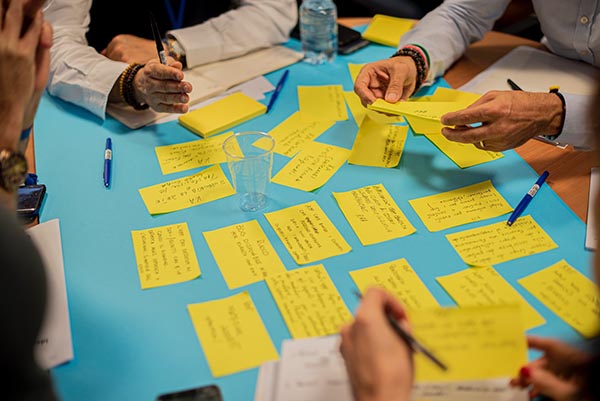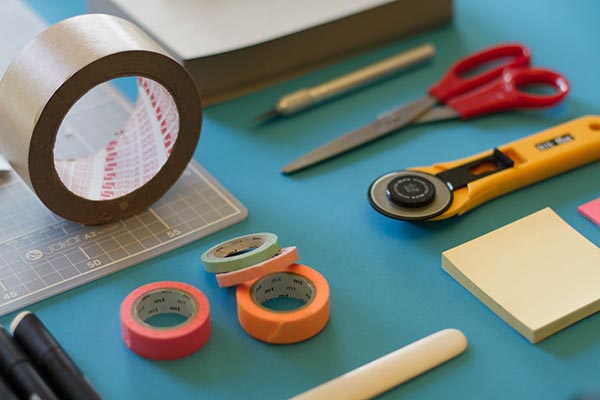Driving Innovation through UX Workshops: A Step by Step Guide
I. Introduction
A. Importance of UX Workshops in Driving Innovation
As the way people interact with products and services evolves, there is an increasing need for attention to be placed on designing a seamless and satisfying user experience. UX workshops play a crucial role in driving innovation in this field. They play a key role in shaping the user experience, ultimately impacting a product or service’s success.
UX workshops bring together key stakeholders, including designers, product managers, developers, and users, to collaborate and generate new ideas to improve the user experience. They provide an opportunity to understand the needs and perspectives of users, explore new design solutions, and create prototypes that can be tested and refined. A UX workshop aims to foster creativity and collaboration and drive innovation in UX design.
B. Overview of the Key Components of an Effective UX Workshop
Planning and preparing are essential to ensure that a UX workshop is productive and results driven. The core elements of a successful UX workshop include clearly defining the problem and target audience, selecting participants who bring diverse perspectives and skill sets, creating a comfortable, creative, and collaborative environment, having ideation and prototyping materials readily available, facilitating the workshop with a skilled leader, and documenting and evaluating the outcomes. By incorporating these key components, organizations can unlock the full potential of UX workshops and drive innovation in their offerings.
II. Understanding the Different Methods of UX Workshops

A. Design Thinking
Design thinking is a user-centered approach to problem-solving that involves understanding users’ needs and creating solutions that meet those needs. It is an iterative process that involves prototyping, testing, and refining ideas until a final solution is reached.
C. Lean UX
Lean UX is a methodology that emphasizes speed and efficiency in the design process. It is designed to minimize waste and maximize the value of each design iteration. Lean UX involves creating minimum viable prototypes and testing them with users to validate or invalidate design concepts quickly. The goal is to quickly identify the most promising design solutions and save time and resources on solutions that are unlikely to be successful.
D. Agile UX
Agile UX is a methodology that combines the principles of agile software development with user-centered design. It is designed to allow teams to respond quickly to changing requirements and to deliver high-quality solutions in a fast-paced environment. Agile UX involves iterating rapidly through the design process, incorporating feedback from users and stakeholders along the way, and continuously improving the solution until it is ready for release.
E. Weighing the Advantages and Disadvantages of Lean and Agile UX
When considering the approach to UX design, organizations must weigh the benefits and drawbacks of Lean UX and Agile UX. Lean UX is designed for organizations to prioritize speed and efficiency in identifying the most promising design solutions. In contrast, Agile UX is ideal for organizations that require a flexible and adaptive design process.
While each method has its strengths, it’s essential to carefully consider the pros and cons of each approach and choose the one that best aligns with an organization’s goals and constraints. Both Lean UX and Agile UX have their strengths and weaknesses, and organizations may find that a hybrid approach that incorporates elements of both methods is the best fit for their needs. Ultimately, the choice between Lean UX and Agile UX will depend on an organization’s specific goals, resources, and constraints.
Regardless of the approach chosen, it is essential to prioritize user-centered design and involve end-users in the design process. This helps ensure that the final solution meets the needs and expectations of the target audience and is well-received by users. Furthermore, by combining the principles of Lean UX or Agile UX with user-centered design, organizations can drive innovation in their products and services and create engaging and compelling user experiences.
III. Running a Successful Innovation UX Workshop

A. Define the Problem and Target Audience
It is crucial to start by defining the problem you aim to solve with the UX workshop and the target audience you want to serve. This sets the stage for a focused and productive workshop. Clearly defining the problem and target audience helps everyone involved understand the purpose and goal of the workshop, making it easier to generate ideas and solutions that are relevant and impactful.
B. Choose the Right Participants
The participants in a UX workshop play a significant role in its success. Therefore, choosing participants with diverse skills, perspectives, and experiences is essential. Furthermore, a group with varied backgrounds will help generate a broader range of ideas and solutions, increasing the chances of finding an innovative solution to the problem.
C. Establish the Right Environment
The environment in which the UX workshop is held is just as important as the participants. The room should be comfortable, well-lit, and conducive to creativity and collaboration. Ample space for participants to move around, create prototypes, and write on whiteboards or sticky notes is also essential. A supportive and engaging environment fosters creativity and encourages participants to share their ideas freely.
D. Prepare Ideation and Prototyping Tools
The right tools and materials are crucial for generating new ideas and prototypes during the workshop. This may include paper, markers, whiteboards, sticky notes, and other materials. Providing participants with the tools they need to ideate and prototype helps streamline the workshop process and ensures everyone is on the same page.
E. Facilitate the Workshop
Moderation is a critical aspect of a successful UX workshop. The facilitator should be skilled in leading group discussions, encouraging participation, and keeping the workshop on track. An experienced facilitator ensures that everyone’s voice is heard, that the workshop stays focused, and that everyone can contribute and participate effectively.
F. Document and Review the Outcomes
Finally, it is essential to document the outcomes of the UX workshop and review them with the participants. This will help ensure that the insights and ideas generated during the workshop are captured and can be acted upon in the future. Reviewing the outcomes with participants also provides an opportunity to reflect on the process and identify improvement areas. By documenting and examining the results, organizations can continue to drive innovation and improve their UX processes over time.
In conclusion, UX workshops can drive innovation in user experience design. They bring together key stakeholders, foster new ideas, and provide a platform for creating prototypes. Through this process, UX workshops can help organizations improve the user experience and ultimately drive the success of their products or services. Therefore, conducting effective UX workshops is one of the crucial steps toward creating innovative and user-centered designs.
Would you like us to assist you? Contact us at: info@areteworks.com (www.areteworks.com)
